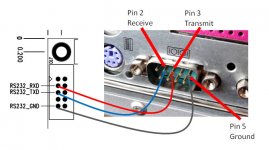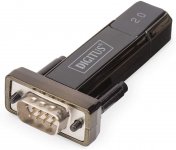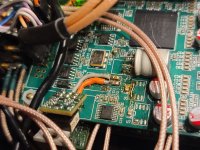Maybe I posted it already somewhere, but I was also kinda shocked by the magnitude of change just a better power supply for the Usb board made. Also played the dac already with Salas shunts, so it is well-fed. I was never really happy with the sound before, I thought that the onboard reclocking would cleanup everything before. How wrong I was...
As for the sound: lately I made an interesting comparison between the Soekris 1121 and a Denafrips Pontus, which has a substantial power supply and discreet clocks. I was afraid that the Soekris could have been left in the dust, but to my surprise it turned the other way around.
Denafrips sounded a little bit brighter, the Soekris warmer, with a less nervous background and more organic. No big differences, but clearly audible, and I preferred the Soekris.
Regarding the fact that the Denafrips is sold directly from the company and would normally cost double, I found that remarkable for a dac which can't sound good because of its clock.
So, as always, there is theory and there is the actual game.
Just wanted to share ...
Thanks for the info on the comparison. The Salas regs powering the 1121 are of course excellent, which probably accounts for some of the performance advantage, plus I don't know if Denafrips use sign magnitude.
What are you using to decouple Vref these days? I think I remember you liking some 100uF Nichicons?
What are you using to decouple Vref these days? I think I remember you liking some 100uF Nichicons?
Nothing beyond what is already on the latest generation board. I tried several configurations and types of caps and found them to degrade the sonic fidelity rather than improving it. IMO, as long as you provide clean power to the DAM1021 and add the 3.3V cap you're done. Using the best availible filters is far more important.
..... snip
I used a 1500 uf cap, but that probably is excessive. The regulator's data sheet says that up to a 100uf cap can improve the transient response.
No transient in an oscillator - hopefully 🙂 but noise sensitive for sure...
But wait... maybe at change of frequency there is a surge for a bit more power.... maybe this makes these less obtrusive - and they happen several times a second at times...
//
Last edited:
Thanks for the info on the comparison. The Salas regs powering the 1121 are of course excellent, which probably accounts for some of the performance advantage, plus I don't know if Denafrips use sign magnitude.
What are you using to decouple Vref these days? I think I remember you liking some 100uF Nichicons?
I switched to Silmic 220uf, it really is about the quality of the cap, not so much the high uF.
And I added some Audio Note Kasei non polar 47uf between the rows of resistors, replacing those terrible ceramic ones.
And btw I also tried to add capacitance to the clock regulator, with 470uf it seemed to be a bit nervous, I settled on 100uf iirc.
But good power supply is key, but thats true for all audio devices.
Nothing beyond what is already on the latest generation board. I tried several configurations and types of caps and found them to degrade the sonic fidelity rather than improving it. IMO, as long as you provide clean power to the DAM1021 and add the 3.3V cap you're done. Using the best availible filters is far more important.
I haven't experimented yet with the decoupling on my 1121, but your finding matches my experience with other equipment. Lots of capacitance can give and attractively bass-y sound, but ultimately it also adds colouration. As Jogi says, the quality of the capacitance used is paramount.
Here is a comparison to show the changes caused by different clock sources.
First, I recorded a synthesizer directly into a discrete high end AD converter (DCS 904).
I then sent the file out of a DAM1021 using the latest and best filter and recorded it back into the DCS 904 AD converter. The AD converter is clocked by its own high quality clock in all cases. The DAM1021 is fed via a AES/EBU RS-422 input circuit into the TTL input from an RME AES hdspe sound card.
In one of the two DAAD roundtrips I set the RME sound card feeding the DAM to us its own internal clock. In this case the two converters are not in sync, but over the short period of time this doesn't cause an audible problem.
In the other DAAD roundtrip the RME sound card is clocked to the DCS 904 AD converter.
According to the RME datasheet there is slightly more overall jitter when the card is clocked externally. It is my suspicion that actually the relevant jitter (probably the close in phase noise?) is quite a bit higher in this case.
Anyway, what do you think?
Dropbox - OB8_RME_comparison.zip - Simplify your life
First, I recorded a synthesizer directly into a discrete high end AD converter (DCS 904).
I then sent the file out of a DAM1021 using the latest and best filter and recorded it back into the DCS 904 AD converter. The AD converter is clocked by its own high quality clock in all cases. The DAM1021 is fed via a AES/EBU RS-422 input circuit into the TTL input from an RME AES hdspe sound card.
In one of the two DAAD roundtrips I set the RME sound card feeding the DAM to us its own internal clock. In this case the two converters are not in sync, but over the short period of time this doesn't cause an audible problem.
In the other DAAD roundtrip the RME sound card is clocked to the DCS 904 AD converter.
According to the RME datasheet there is slightly more overall jitter when the card is clocked externally. It is my suspicion that actually the relevant jitter (probably the close in phase noise?) is quite a bit higher in this case.
Anyway, what do you think?
Dropbox - OB8_RME_comparison.zip - Simplify your life
Last edited:
Here are two more examples that are even more obvious.
In this case it is a round trip through the mixing console, where the source signal is subjected to quite a lot of EQ, which amplifies the differences.
This time I the clock source is either the RME's internal clock, the AES/EBU input or the word clock input (the latter two again coming from the AD converter). For some reason there are pretty obvious differences between WC and AES, with the former being my clear preference. The cable used to connect the AD converter output and the sound card input is not a standard AES/EBU cable, but it is rather short, and shouldn't matter at all (as long as it is bit perfect) if the DAM1021's FIFO buffer was actually transparent.
Dropbox - DAM1021_clock_comparison_guitar.zip - Simplify your life
Dropbox - DAM1021_clock_comparison_drums.zip - Simplify your life
In this case it is a round trip through the mixing console, where the source signal is subjected to quite a lot of EQ, which amplifies the differences.
This time I the clock source is either the RME's internal clock, the AES/EBU input or the word clock input (the latter two again coming from the AD converter). For some reason there are pretty obvious differences between WC and AES, with the former being my clear preference. The cable used to connect the AD converter output and the sound card input is not a standard AES/EBU cable, but it is rather short, and shouldn't matter at all (as long as it is bit perfect) if the DAM1021's FIFO buffer was actually transparent.
Dropbox - DAM1021_clock_comparison_guitar.zip - Simplify your life
Dropbox - DAM1021_clock_comparison_drums.zip - Simplify your life
AES has an embedded clock signal. Bit perfect is not a good enough criterion when it comes to clock jitter. That's because clocks are analog signals not digital.
Mk4 - you missed
"and shouldn't matter at all (as long as it is bit perfect) if the DAM1021's FIFO buffer was actually transparent."
read the posts instead of stating obvious facts which make you look daft...
//
"and shouldn't matter at all (as long as it is bit perfect) if the DAM1021's FIFO buffer was actually transparent."
read the posts instead of stating obvious facts which make you look daft...
//
Last edited:
The dam1021 serial port is at real RS-232 level, not 3.3V CMOS levels.... That might be the issue.
Im afraid here another guy not managing with RS232. Weird thing here is that I bought exactly the recommended FTDI on the website FTDI TTL-232R-RPI.
When powering the board I just see weird characters Tried only with indicated speed 115200. Tried putty, hterm and tera term.
Tried only with one laptop (corporate) next step.is to try with my own computer to discard any corporate blocked stuff (doubt it).
Else, any additional hint?
Searching the forum for FTDI gives.13 entries I already checked... Will keep looking.
Have great one.
Jorge
Im afraid here another guy not managing with RS232. Weird thing here is that I bought exactly the recommended FTDI on the website FTDI TTL-232R-RPI.
When powering the board I just see weird characters Tried only with indicated speed 115200. Tried putty, hterm and tera term.
Tried only with one laptop (corporate) next step.is to try with my own computer to discard any corporate blocked stuff (doubt it).
Else, any additional hint?
Searching the forum for FTDI gives.13 entries I already checked... Will keep looking.
Have great one.
Jorge
I tried two different USB solutions. For me it only works with an ancient laptop that has a serial port build in.
Which site did you get your info from?
Here is from randytsuch's audio page: Soekris R2R Dam DAC
To update the filter, you need to connect a RS-232 port to this DAC, but these days most PC's don't have one. And early on, people had problems establishing a connection with different 232 adapters.. It seems there are certain adapters that work.
I use a ATEN USB to Serial RS-232 Converter, Model UC-232A. I found this one on ebay
To connect
ATEN Pin 2 goes to J10 pin 3
ATEN Pin 3 goes to J10 pin 2
ATEN Pin 5 goes to J10 pin 5
I made a little adapter. One side of the adapter is a 9 pin female DB9 that plugs into the ATEN. Then about 6 feet of wire to make it easier to connect, and then some pin sockets that plug into the pins on the DAC.
This adapter needed drivers installed. Drivers for this adapter are here
Aten drivers
Go towards the bottom, and click Support and Download
There are drivers for Android, Linux, Mac and Windows, so pretty much anything.
I also used extraputty for my terminal program
extraputty
I looked in the windows Device Manager page to see what the serial port number was. Go to Control Panel, System then select Device Manager (this is for Windows 7)
Setup the comm port as follows:
Baud rate: 115,200 (This is pretty fast. Use a good, short cable)
Data bits: 8
Stop bits: 1
Parity: none
Flow control: none
//
Here is from randytsuch's audio page: Soekris R2R Dam DAC
To update the filter, you need to connect a RS-232 port to this DAC, but these days most PC's don't have one. And early on, people had problems establishing a connection with different 232 adapters.. It seems there are certain adapters that work.
I use a ATEN USB to Serial RS-232 Converter, Model UC-232A. I found this one on ebay
To connect
ATEN Pin 2 goes to J10 pin 3
ATEN Pin 3 goes to J10 pin 2
ATEN Pin 5 goes to J10 pin 5
I made a little adapter. One side of the adapter is a 9 pin female DB9 that plugs into the ATEN. Then about 6 feet of wire to make it easier to connect, and then some pin sockets that plug into the pins on the DAC.
This adapter needed drivers installed. Drivers for this adapter are here
Aten drivers
Go towards the bottom, and click Support and Download
There are drivers for Android, Linux, Mac and Windows, so pretty much anything.
I also used extraputty for my terminal program
extraputty
I looked in the windows Device Manager page to see what the serial port number was. Go to Control Panel, System then select Device Manager (this is for Windows 7)
Setup the comm port as follows:
Baud rate: 115,200 (This is pretty fast. Use a good, short cable)
Data bits: 8
Stop bits: 1
Parity: none
Flow control: none
//
I tried two different USB solutions. For me it only works with an ancient laptop that has a serial port build in.
Thanks for the input, yes that's like a safe solution... But no 232 at home.
I didn't worry. Plugged in and the connection was there ... with this USB to RS232 adapter
DIGITUS USB auf Seriell Adapter - RS232 Konverter - USB: Amazon.de: Computer & Zubehor
DIGITUS USB auf Seriell Adapter - RS232 Konverter - USB: Amazon.de: Computer & Zubehor
Attachments
@TNT you nailed it.
I just was obfuscated reading stuff too fast.... The FTDI I pointed out is valid for @&€1xxx, and I read there dam1xxx.... Bit it looks like @&€ means exactly dac1xxx so I bought the indicated cable by Soekris, yes, but for a different board.
Sometimes you just need some eyes to help you. As @TNT mentioned "which website" I just thought "come on, the official one...." And next though "wait, if @TNT does not know that maybe I misread something"
Thanks guys, will look different option and keep you updated.
@MvonB thanks for that one. Will order it and try it.
I just was obfuscated reading stuff too fast.... The FTDI I pointed out is valid for @&€1xxx, and I read there dam1xxx.... Bit it looks like @&€ means exactly dac1xxx so I bought the indicated cable by Soekris, yes, but for a different board.
Sometimes you just need some eyes to help you. As @TNT mentioned "which website" I just thought "come on, the official one...." And next though "wait, if @TNT does not know that maybe I misread something"
Thanks guys, will look different option and keep you updated.
@MvonB thanks for that one. Will order it and try it.
Last edited:
I didn't worry. Plugged in and the connection was there ... with this USB to RS232 adapter
DIGITUS USB auf Seriell Adapter - RS232 Konverter - USB: Amazon.de: Computer & Zubehor
Great, bought it - thanks!
Nothing beyond what is already on the latest generation board. I tried several configurations and types of caps and found them to degrade the sonic fidelity rather than improving it. IMO, as long as you provide clean power to the DAM1021 and add the 3.3V cap you're done. Using the best availible filters is far more important.
This was the solution I settled on 2 years ago, I found it made a significant difference at the time, especially with the stereo separation between the two boards in a dual-mono config. The original ldo regulator config I found to be rather noisy on the scope, and moreso during sample rate changes/syncs.
Adding the caps (both polymer+stacked ceramics) is probably sufficient but I went with sparko discrete for the 3.3, haven't modded the switching regulator at all. I reused the serial port pads to give it some rigidity + ground pin and disconnected the serial pin it shared with. Since its dropping from 5V (dual LT3045 based) it doesn't dissipate much heat.
Still happy with my setup its the one thing I have that I haven't felt the need to upgrade to the latest & greatest version. Diminishing returns will greatly apply.
Attachments
This was the solution I settled on 2 years ago, I found it made a significant difference at the time, especially with the stereo separation between the two boards in a dual-mono config. The original ldo regulator config I found to be rather noisy on the scope, and moreso during sample rate changes/syncs.
Adding the caps (both polymer+stacked ceramics) is probably sufficient but I went with sparko discrete for the 3.3, haven't modded the switching regulator at all. I reused the serial port pads to give it some rigidity + ground pin and disconnected the serial pin it shared with. Since its dropping from 5V (dual LT3045 based) it doesn't dissipate much heat.
Still happy with my setup its the one thing I have that I haven't felt the need to upgrade to the latest & greatest version. Diminishing returns will greatly apply.
Interesting! Where are the added ceramics? C40?
Did anyone listen to the comparisons I posted? Soeren?
IMHO these clearly show the difference an external source makes. I wish I could measure the clock myself... Is there anyone here in Germany near Cologne with suitable measuring equipment?
IMHO these clearly show the difference an external source makes. I wish I could measure the clock myself... Is there anyone here in Germany near Cologne with suitable measuring equipment?
Did anyone listen to the comparisons I posted? Soeren?
IMHO these clearly show the difference an external source makes. I wish I could measure the clock myself... Is there anyone here in Germany near Cologne with suitable measuring equipment?
If you have a little patience I will measure the phase noise soon.
- Home
- Vendor's Bazaar
- Reference DAC Module - Discrete R-2R Sign Magnitude 24 bit 384 KHz


